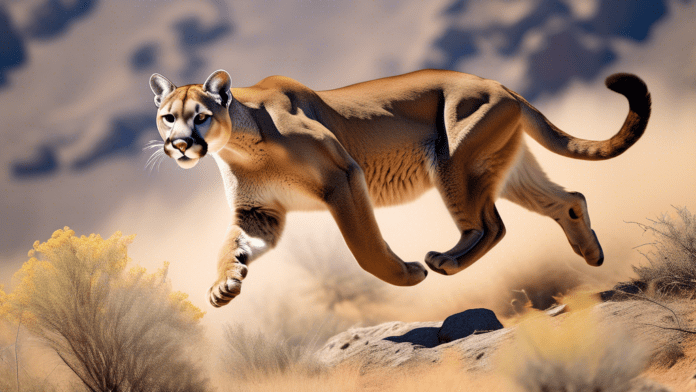An Introduction to Mountain Lions (Leon spp)
Mountain lions (also referred to as cougars, pumas or panthers) are one of the most versatile and adaptable predators found within animal kingdom. Residing mostly within Americas, these majestic beasts are famed for their agility, strength and stealth as well as an impressive speed which enables them to hunt effectively over various terrains.
Physical Attributes That Increase Speed
Mountain lions’ muscular builds are one of the main factors contributing to their fast movements.
Equipped with powerful legs capable of creating explosive bursts of speed, long bodies with flexible spines allow them to cover ground quickly and efficiently while their long retractable claws offer exceptional traction and grip, essential when running at high speeds over rocky or unstable ground. Cougars, too, possess long bodies equipped with retractable claws which give them excellent traction on rocky terrain during pursuit pursuits.
Maximum Speed
To properly assess a mountain lion’s speed, it’s essential to differentiate between their cruising and full sprint speeds. Mountain lions have been recorded reaching up to 50 miles per hour (80 kilometers per hour) during full stride sprinting; such bursts of speed typically only last for several hundred meters before retreating back toward prey; such high-speed chases are generally used when closing in on prey rather than for extended travel distance.
Comparison to Predators
Mountain lions may be fast, but they aren’t the fastest animals in nature. Cheetahs hold the record for fastest land animal, reaching speeds up to 75 miles per hour; mountain lions remain among the fastest predators within their range and often outrun deer and smaller mammals for prey – their speed combined with impressive leaping capabilities make them formidable hunters.
Hunting Techniques and Speed Utilization
Mountain lions typically employ stealth and surprise to capture their prey, rather than long chases. They use short bursts of speed in short bursts to ambush animals at dusk or dawn when they are most active, usually taking down animals quickly before unleashing an assault using powerful hind legs to launch powerful, precise attacks with deadly force.
These cats typically stalk prey quietly until as close as possible before unleashing their attack with great speed from an ambush position before leaping at high-speed towards them before unleashing their high-speed attacks with deadly precision
Before unleashing powerful attacks with deadly force from behind their formidable hind legs that leverage powerful hind legs pounce with precise force with devastating impact from behind if possible allowing them to catch and kill animals quickly before moving onward to prey otherwise.
Mountain Lion Adaptations to Terrain
The varied habitats mountain lions inhabit, ranging from forests and deserts to mountainous regions, also impact their speed adaptations.
Their agility enables them to traverse complex terrain, climbing steep slopes while leaping over obstacles or sprinting across open fields with ease; this ensures they can hunt efficiently in various conditions and environments.
Conservation and Interaction between People
Mountain lions, while boasting impressive physical capabilities, face several threats including habitat loss, human encroachment and hunting. While their speed and agility may provide them with means of survival in short term, environmental changes often have long-term repercussions which threaten these magnificent predators’ presence in natural ecosystems and their incredible physical abilities are worthy of admiration.
Conservation efforts must continue in order to safeguard these beautiful predators.
Conclusion
Mountain lions have evolved into one of nature’s top predators. Capable of reaching speeds up to 50 miles per hour, these magnificent beasts demonstrate not only their power as hunters but also their agility in adapting to diverse terrain.
Their speed makes them some of the most efficient hunters in the wild; understanding and appreciating these abilities underscores the necessity of conservation efforts that protect these majestic animals and their environments.
Here are more :







